Art
Tuesday, February 21, 2017
Tuesday, January 31, 2017
Patrick Bernauw Historical Mystery Author
The Holy Blood of Bruges, a New Jerusalem
Updated on July 14, 2016
The Holy Blood of Christ seems to have turned medieval Bruges (in Flanders, Belgium) into a Holy City. It's what, since the 19th century, made tourism popular in Bruges. But maybe this Holy City is not as holy as it seems, just because of this Precious Holy Blood that... well, could be pretty unholy.
Basilica of the Holy Blood in Bruges since 1150...
Click thumbnail to view full-size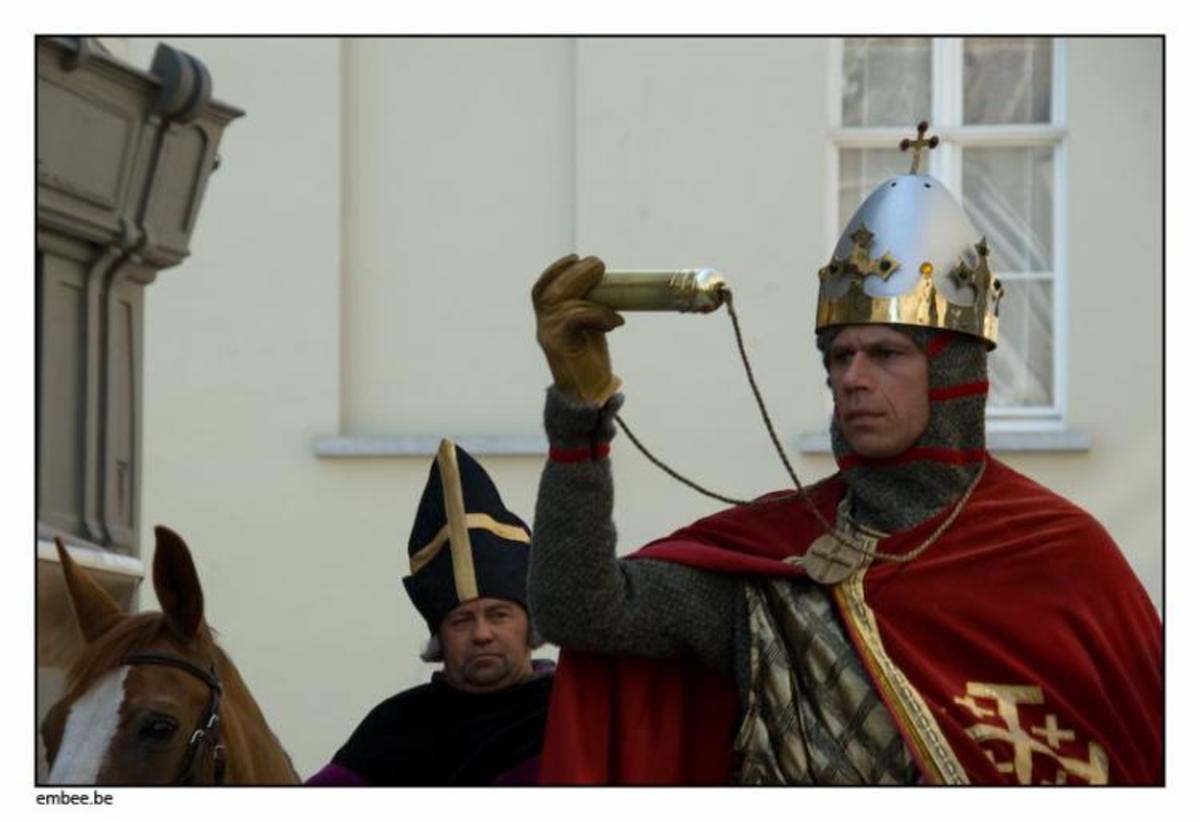
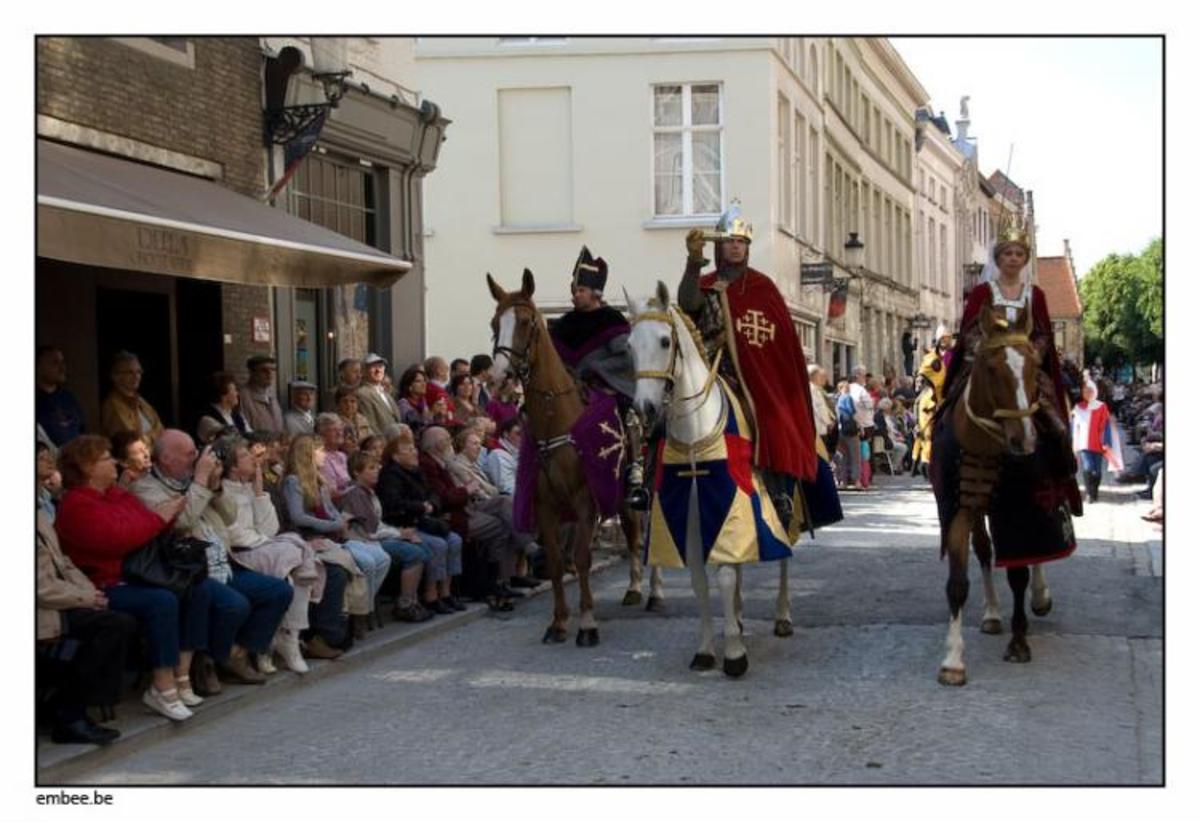
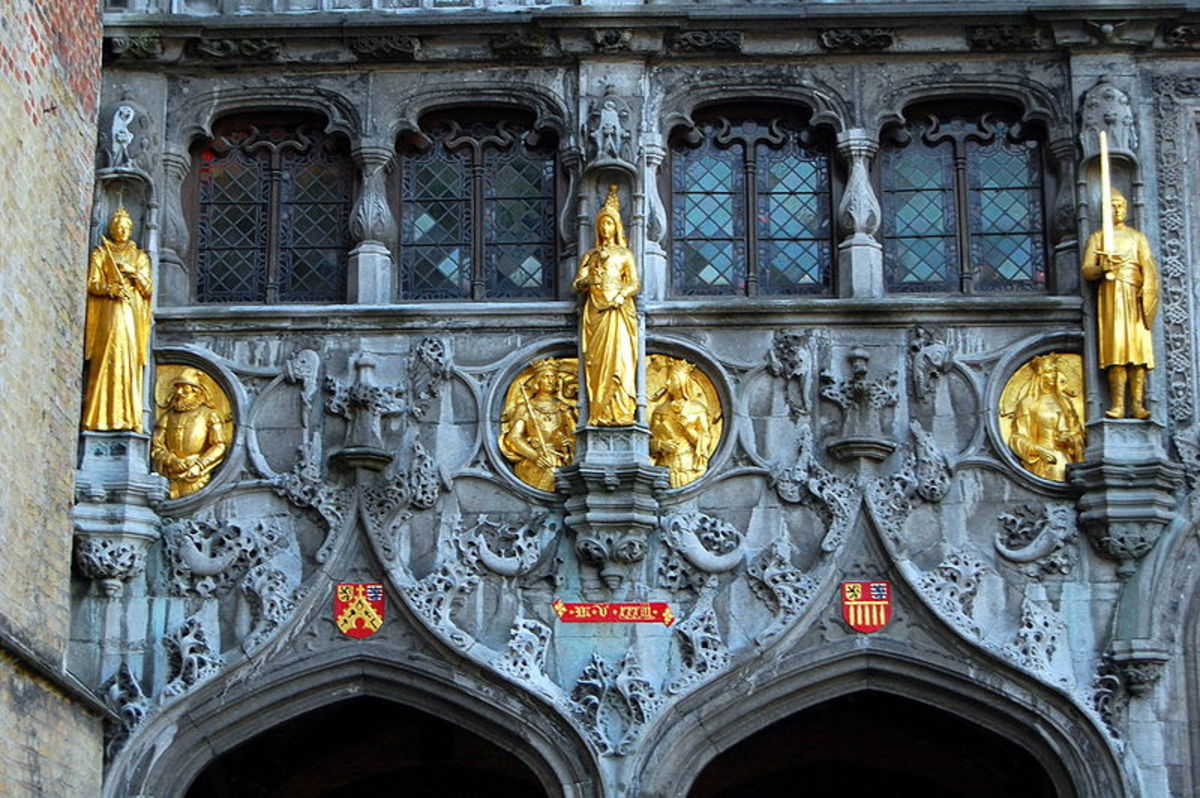
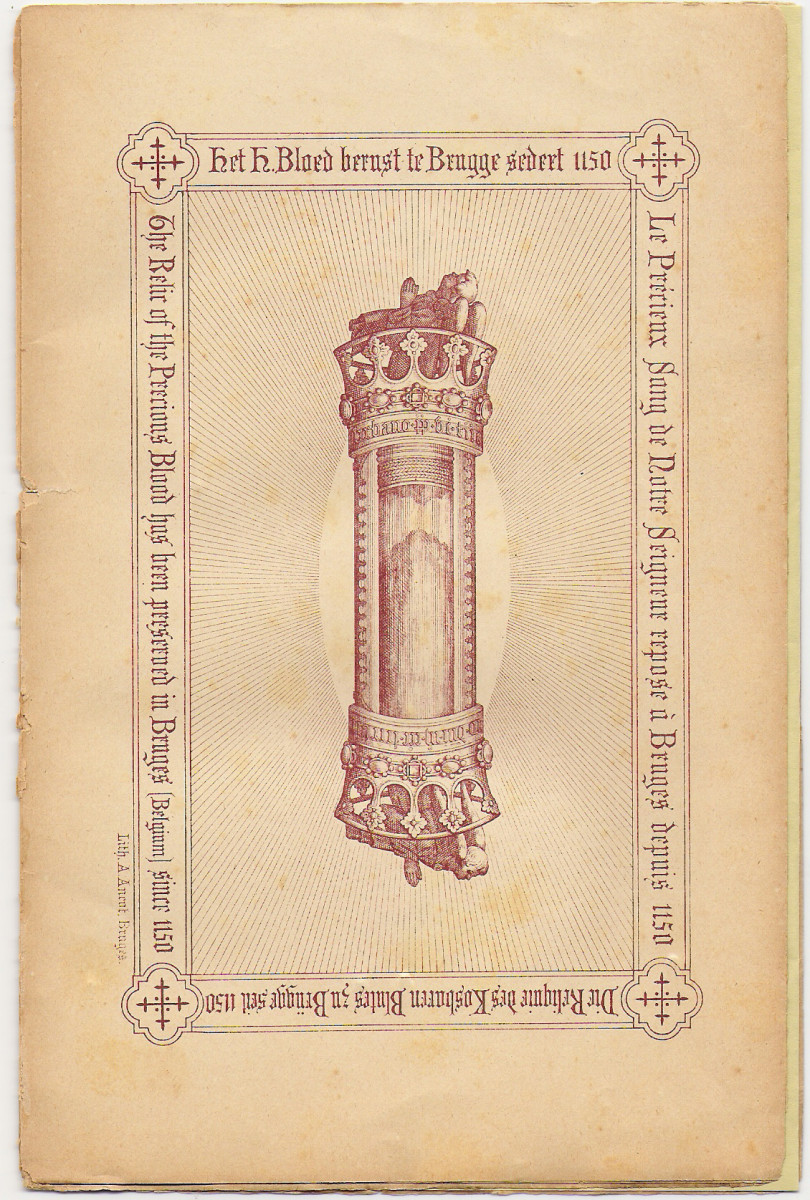
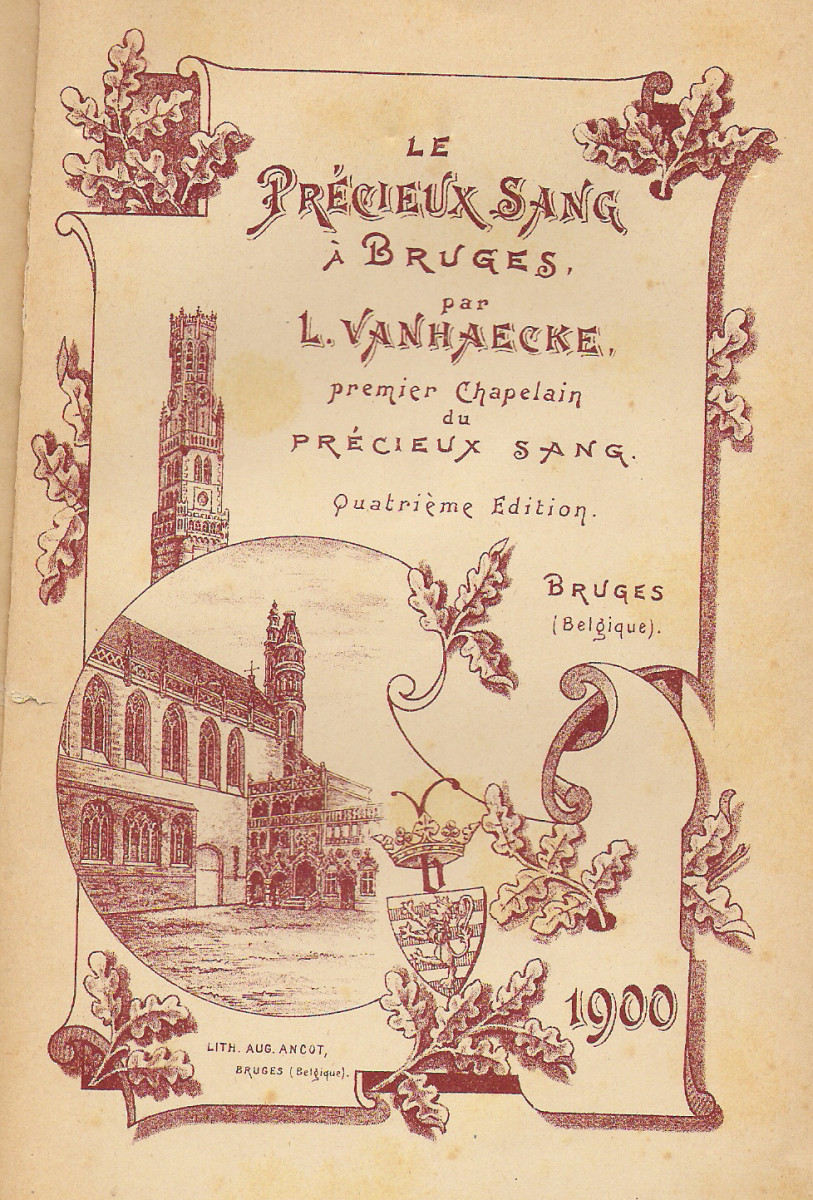
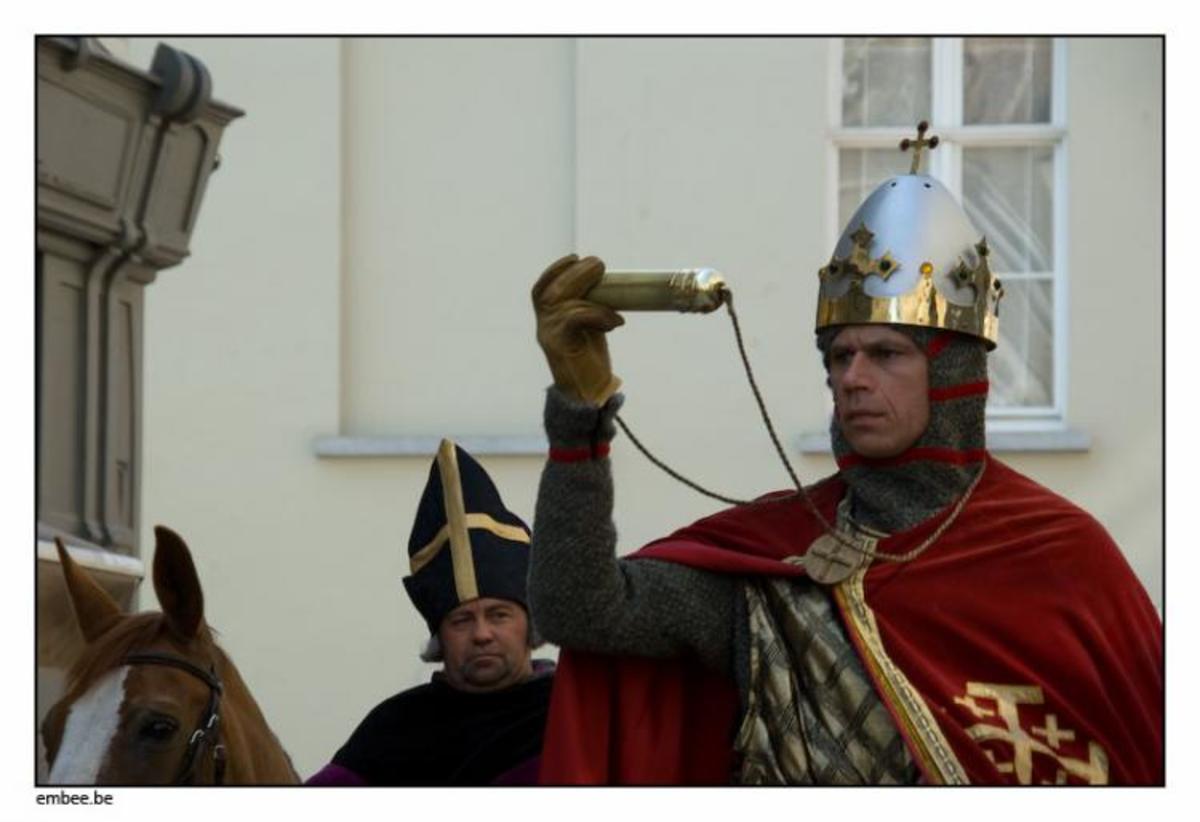
Count Thierry of Alsace with the Holy Blood in the Procession, 2009
- The Holy Sepulchre of Bruges-la-Morte
Visiting the Church of the Holy Sepulchre in Bruges-La-Morte, the Venice of the North, is a strange and morbid experience. Not only because the Holy Grave is to be found here, or a statue of the dead Christ,...
In his poem Brugge (Bruges), the famous Flemish priest-poet Guido Gezelle who was born in Bruges (1830), described the city as a copy of the Holy Land, with its great Gothic churches called Jerusalem, Nazareth or Bethlehem... and of course, because of the Holy Blood that was brought here during the crusades. The Jerusalem Church, in the quiet St. Anna Quarter, is maybe the most remarkable of all these churches that dominate the skyline of Bruges. It was built in the 15th century as a scale model of the Holy Sepulcher by Anselmus Adornes and his wife, and with a rather morbid fake tomb of Christ in it. The Jerusalem Church is still intact and privately owned by the descendants of the Adorni family, who were merchants from Genoa.
Perceval, or the Story of the Grail by Chrétien de Troyes
- The Story of the Grail by Chretien de Troyes
Chrétien de Troyes was a French poet who was the first to write about the Grail, but what is the Grail and where can the Grail be? Some believe the Grail is the Holy Blood of Christ, or his royal bloodline, and this Holy Blood was brought to Bruges!
The Templars
Of course, this was all a result of the Coming of the Holy Blood to Bruges. According to an old legend Derrick of Alsace, Count of Flanders (Thierry d'Alsace in French, Diederik van den Elzas in Dutch) received the relic of the Holy Blood out of the hands of his brother-in-law who also was the King of Jerusalem: Baldwin III of Anjou. This happened because of his exceptional heroism during the second crusade and with the approval of the patriarch of Jerusalem. In april 1150, the relic arrived in Bruges, accompanied by the Count of Flanders, his wife Sybilla of Anjou and Leonius, the abbot of Saint Bertin's abbey of Saint Omar (in those days a Flemish city, now a French city). They brought the Holy Blood of Christ to the Chapel of Saint Basilius on the Burg Square, where it still is displayed every Friday, before and after the mass, to be venerated by the faithful.
The oldest document concerning the Holy Blood of Bruges dates from 1256. There is a gap of more than a century between the "legendary account" and this document, so it is possible that the Holy Blood in reality arrived much later in Bruges. Around 1250, there was a relic of the Holy Blood in Constantinople, in the imperial palace of Bucoleon, and belonging to a series of relics connected with the suffering of Christ. In 1203, Constantinople fell into the hands of the crusaders and a year later the city was sacked. The Count of Flanders, Baldwin IX, was chosen as the new emperor and probably he sent looted relics to Bruges, where his daughters Johanna and Margaretha were in charge of the county. The manner in wich the rock-crystal vial is cut also indicates it was meant to contain perfume, and thus an origin in Constantinople.
In the early 15th century, the Noble Brotherhood of the Holy Blood was founded. Its 31 members have to be citizens of Bruges and "honorable people". The purpose of the Brothers is to safeguard the relic and its veneration. On ceremonial occasions, they wear a black silken tabard on which a pelican is embroidered.
The adoration of the relic also is what the internationally famous Procession of the Holy Blood is all about. This first rank touristic and folkloristic attraction is held every year in the spring, on Ascension Day, and this since 1291. Each year some 50.000 pilgrims are present to see more than 1800 actors in historical and biblical scenes, and - of course - the bishop of Bruges carrying the relic through the streets.
In the Procession the Templars don't show up, and maybe that even can't be called strange. In 1307, under pressure of King Philip IV of France, many of the Order's members were arrested (mainly in France), tortured into giving false confessions and burned at the stake. Pope Clement V disbanded the Order in 1312. The charges? Religious heresy and sexual misconduct. In 2001, an until then unknown record of the Temple trial was found in the Vatican Secret Archives, saying Clemens absolved the Templars of all heresies before formally disbanding the Order. Currently, the Roman Catholic Church admits that there was nothing wrong with the Order or its Rule.
The Order was founded around 1119 by Hugues de Payens, a French noble from the Champagne. He collected eight knights, the most important being Godfrey de Saint-Omer. According to legend, Hugues and Godfrey were so poor that they had only one horse, so the famous imago on the Temple seal became that of two men riding on one single horse. Godfrey is often called a French knight, because Saint-Omer belongs to France now, but it was then a part of Flanders. He was a vassel of Robert II of Flanders.
The mission of the Templars was to protect the pilgrims who visited the Holy Land. King Baldwin II of Jerusalem allowed them to set up headquarters inside the Al Aqsa Mosque on the southeastern side of the Temple Mount, a sacred place for Muslims, Jews and Christians. It was believed here were the ruins of the Temple of Solomon to be found, the legendary hiding place for the Ark of the Covenant. The crusaders turned the Al Aqsa into a church, the Temple of the Lord, and from now on they were called the Templars. The round Dome of the Rock and the Church of the Holy Sepulchre became the model for many Templar churches built in Europe.
For nine years little was heard of the Order. But after 1129, when the Council of Troyes officially sanctioned the Knights Templar, they became very well-known throughout the whole of Europe. The rule of the Poor Fellow-Soldiers of Christ and of the Temple of Solomon (Pauperes commilitones Christi Templique Solomonici in Latin, or shortly: Milites Christi, Soldiers of Christ) was kept in the Abbey of the Dunes in Coxyde, not far from Bruges or Saint-Omer. The rule was written by Bernard of Clairvaux; the Templars had to be warrior-monks, soldier-mystics, "a militia of Christ". They were dressed in the famous white mantles with the red cross. The first headquarters of the Temple in Europe, was in Ypres - near Bruges and Saint-Omer again. In fact, it was a gift from Godfrey de Saint-Omer.
The history of the Temple has been written mainly by French and English authors, from a French or English point of view. They often forget to mention - or don't know it - that the Templars always had a very important "Flemish Connection". One of the most (in)famous Grand Masters of the Order was Gerard de Ridefort, who had undoubtedly a Flemish origin, although 19th century writers suggested an Anglo-Norman background. In the Flemish village of Ruddervoorde ("Ridefort") there still are many legends surrounding the Temple Commandery that once belonged to him.
Historical or pseudo-historical books as The Holy Blood and the Holy Grail or The Da Vinci Code claim the Templars discovered "something" in the ruins of the Temple, proving Jesus survived the Crucifixion or was married to Mary Magdalene. It is said that the Holy Grail, or Sangreal, was found by the Templars and taken to Scotland in 1307, where it was buried beneath Rosslyn Chapel. But there is not one physical or documentary evidence to support such a supposition... except for the Holy Blood of Bruges. Belgian scholars like Paul de Saint Hilaire (La Belgique Mystérieuse, La Flandre Mystérieuse, L'Ardenne Mystérieuse) or Hubert Lampo (De Zwanen van Stonehenge/The Swans of Stonehenge) have written in the seventies, years before Baigent, Leigh & Lincoln published their international bestseller The Holy Blood and the Holy Grail, that the one and only Holy Blood (or Holy Grail) was found by the Templars and brought to Bruges.
On Christmas Day 1148, in the Holy Sepulchre and while in the presence of Derrick of Alsace and his wife Sybilla of Anjou, the Templars would indeed have found the Precious Blood of Christ. They poored it respectfully into an octagonal vial and sealed the ends with two golden roses. Sybilla had been infected with leprosy, like some of the Templars that were with her, and was suffering from a heavy fever. But when she held the relic in her hands, she had a vision in which she saw Bruges as "a New Jerusalem of the West"... and she cured miraculously, as did all the lepers surrounding her. Sybilla made a solemn plegde to turn Bruges into this New Jerusalem, a Holy City. When the Flemish army reached Bruges, the masons had just finished the Chapel of Saint Basilius...
Of course, this can be merely a legend. But there is no doubt about it that the Holy Blood did came to Bruges. The Sanguis Christi was called upon for the most various reasons, from personal affairs to political questions. On Good Friday, the Holy Blood became fluid again, a miracle that ceased to exist when the Temple Order was disbanded.
- The Code of the Holy Blood
The "demoniac and sodomite"(according to French writer Joris-Karl Huysmans) Chaplain of the Holy Blood Chapel in Bruges wrote a book about the Holy Blood of Bruges, with definitely a code in it...
Bruges-la-Morte, Georges Rodenbach
Bruges, the Grail City
The Latin word "gradalis" means "a dish". After the Grail romances, late medieval writers came up with a false etymology for "grial", the Old French word for gradalis: it was the sangréal ("sang royal" or "holy blood") that became san graal, san gréal and Holy Grail. Baigent, Leigh & Lincoln also made this connection, and so did many historical conspiracy writers like Dan Brown after them. But the connection was already established long before Baigent, Leigh & Lincoln turned it into a popular theme, with a 19th century first rank faction writer as Joris-Karl Huysmans in his scandal novel Là-Bas, or with "new age" or "alternative history" authors as Frédérick Tristan (Géants et Gueux de Flandre, 1979). As I put it in my article Visiting Bruges-la-Morte, a medieval ghost city: the Holy Blood of Bruges was why the Powers of Good & Evil had to fight each other more fiercely there than anywhere else in the world. Because, if this town was choosen and designed to be a Holy City, then Satan also had to unleash here all his forces to turn Bruges into a truly Unholy City...
According to Christian mythology, the Holy Grail was the cup used by Jesus at the Last Supper. The connection of Joseph of Arimathea with the Grail dates from the late 12th century, when Robert de Boron describes how Joseph receives the Grail from Jesus and sends it to Great Britain. Later writers recounted how Joseph used the Grail to catch his blood. The legend combines Christian lore with Celtic myth and some parts are interwoven with legends surrounding the Holy Chalice.
Philip Coppens relates in his article Bruges: the Grail city? that the Church itself is highlighting the Bible makes no mention of the collecting of the blood of Christ, while he was hanging on the Cross. However, the Quest for the Holy Grail first appears in a romance written by Chrétien de Troyes. He found the story in a manuscript supposedly given to him by the son of Derrick, Philip of Alsace, Count of Flanders!
The first Grail romance postdates the legendary arrival of the Holy Blood by some 25 years. "Interestingly," Philip Coppens notices, "Chrétien lists a knightly and royal tradition surrounding a precious relic, carried in a procession." Was the Count of Flanders asking for a Quest that displayed his relationship to the Holy Blood & the Holy City of Bruges?
And what to think of the noble Brotherhood of the Holy Blood, that was incorporated in the 15th century, when the Jerusalem Church was built? Is it only another name for the famous Grail Brotherhood?
Philip Coppens doesn't think the Holy Blood of Christ was the source of Chrétien's Grail. But that doesn't really matter. All these themes somehow got mixed up somewhere during the 19th century, when "decadent" writers like Georges Rodenbach and Joris-Karl Huysmans turned Bruges into Bruges-la-Morte, a Very Unholy City indeed...
In Bruges-la-Morte or The Dead City of Bruges, Georges Rodenbach tells the story of a widower who, overcome with grief, takes refuge in Bruges. There he becomes obsessed with a dancer in the opera Robert le diable who is the exact likeness of his dead wife. The novel was notable for its poetic evocation of the decaying city and raised some scandal because of the "decadent" atmosphere.
The Damned or Down There - by J.K. Huysmans
The Damned, Down There...
But this was only a minor storm, compared with the scandal Joris-Karl Huysmans raised. Huysmans, born in Paris from a Dutch father, had Là-Bas published in 1891 and attracted considerable attention for its depiction of French Satanism. The novel introduced the character of Durtal, a thinly disguised alter ego of the writer, who would return in later work and trace Huysmans' conversion to Roman Catholicism.
Là-Bas, translated as Down There or The Damned, has a very vivid scene, depicting a Black Mass: "And thou, thou whom, in my quality of priest, I force, whether thou wilt or no, to descend into this host, to incarnate thyself in this bread, Jesus, Artisan of Hoaxes, Bandit of Homage, Robber of Affection, hear!... (...) Profaner of ample vices, Abstractor of stupid purities, cursed Nazarene, do-nothing King, coward God!"
"Yet the ultimate abomination of the nineteenth century must be that, disguised as fiction and yet widely recognized at the time as fact, reported by Joris-Karl Huysmans in his notorious novel LA-BAS," says Aubrey Melech inMissa Niger: La Messe Noire (Sint Anubis Books). "Indeed, so close to the abominable truth is this work that the Canon Docre, Huysmans' Satanic celebrant, can be identified as the Belgian-born priest Louis Van Haecke, who died, if not in the odour of sanctity, at least at the advanced age of 84 in 1912." - And Louis Van Haecke was the Chaplain of the Holy Blood Chapel...
T.J. Hale, the translator of Là-Bas, states in his foreword that Huysmans was close friends with Berthe Courrière, a handsome woman who gave consecrated hosts to stray dogs and was busy enticing inexperienced confessors into sin by inventing all sort of erotic tales. She had a wide range of contacts in occultist and spiritualist circles too. About a year after Huysmans first met her, Berthe got herself in serious trouble with the Belgian authorities. She was been found hiding in the bushes, clad only in her underwear. The police of Bruges was skeptical of the story she told them about a narrow escape from a satanic priest named Van Haecke and interned her in a mental asylum. It took Remy de Gourmont, another friend of Berthe (and Huysmans) to obtain her release.
"The question of whether or not the author of The Damned ever attended a Black Mass is one which has been much debated by biographers and scholars," Hale says. "If he did, it was probably in the company of this same Abbé Louis Van Haecke, Chaplain of the Holy Blood at Bruges, who, like Canon Docre in the novel, was reputed to have had ‘a cross tattooed on the soles of his feet, so that he may have the pleasure of continually walking upon the symbol of the Saviour'. Huysmans certainly liked the claim that he had attended such a ceremony (though he was also capable of denying it too), and that it was there that he had first seen Van Haecke, who was not officiating but standing a little apart from the rest of the congregation."
"I discovered many curious facts concerning this man," Huysmans declared. "He has paid three visits to Paris, where he moves in Satanist and occultist circles. On his second visit he put up at the Hôtel Saint-Jean-de-Latran, in the rue des Saints-Pères, an establishment of doubtful repute which is known chiefly for its clientèle of renegade priests."
Huysmans did come to believe that the Chaplain of the Holy Blood at Bruges was the most evil man of Europe and Van Haecke sure had an interest in "comparative religion", but there is no solid proof that he indeed was the real demonic Canon Docre. However, when Là-Bas was published and the story got around that Canon Docre was in reality the Chaplain of the Holy Blood, the Chapel in Bruges attracted so many visitors that Van Haecke had to be replaced.
Until his death, Huysmans kept saying that the Chaplain of the Holy Blood, keeper of the Holy Grail, Lodewijk (or Louis) Van Haecke lost his faith because Jezus, "Artisan of Hoaxes", didn't die at Golgotha...
Click thumbnail to view full-size
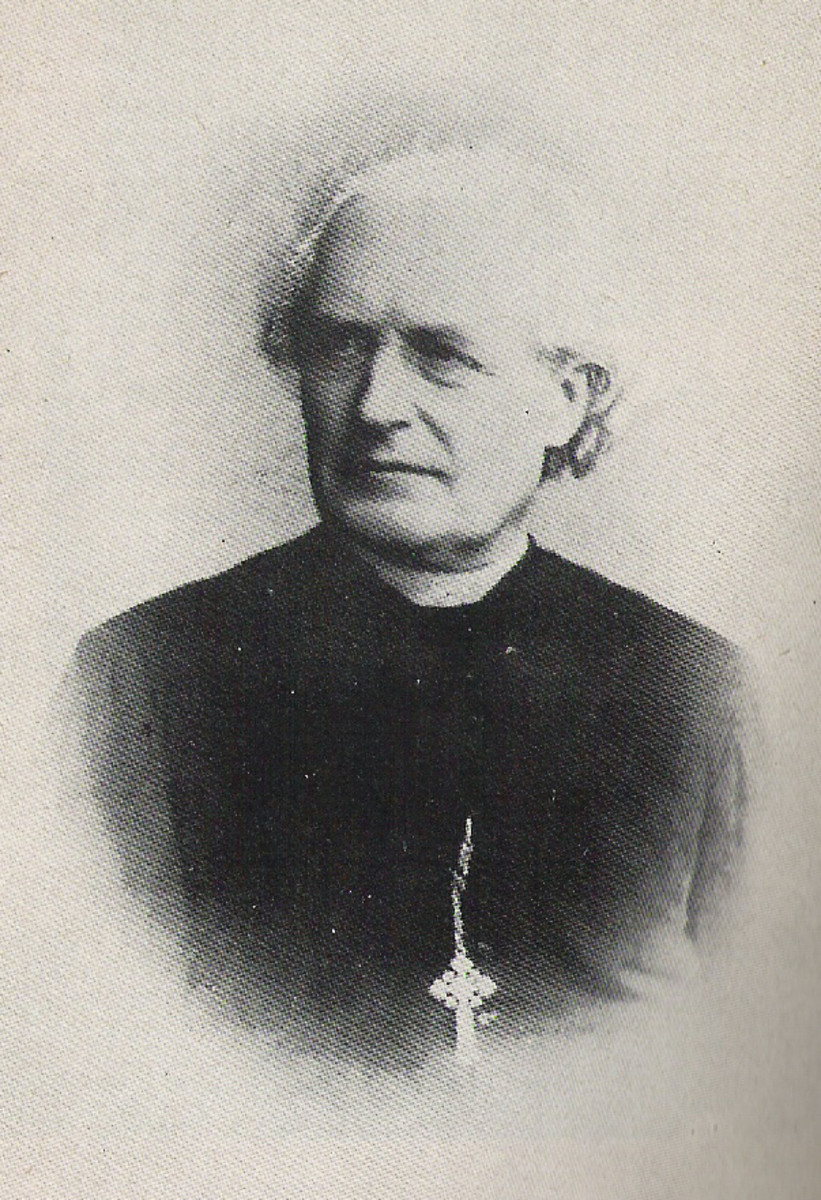
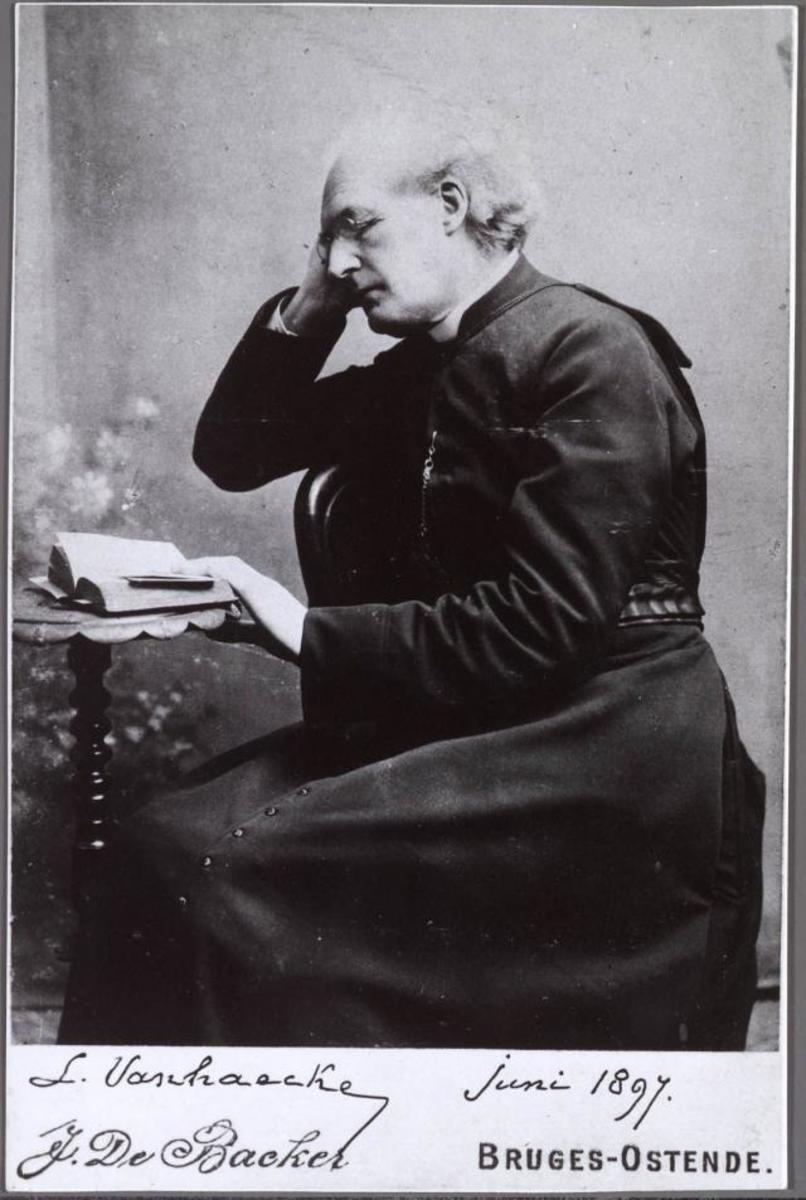
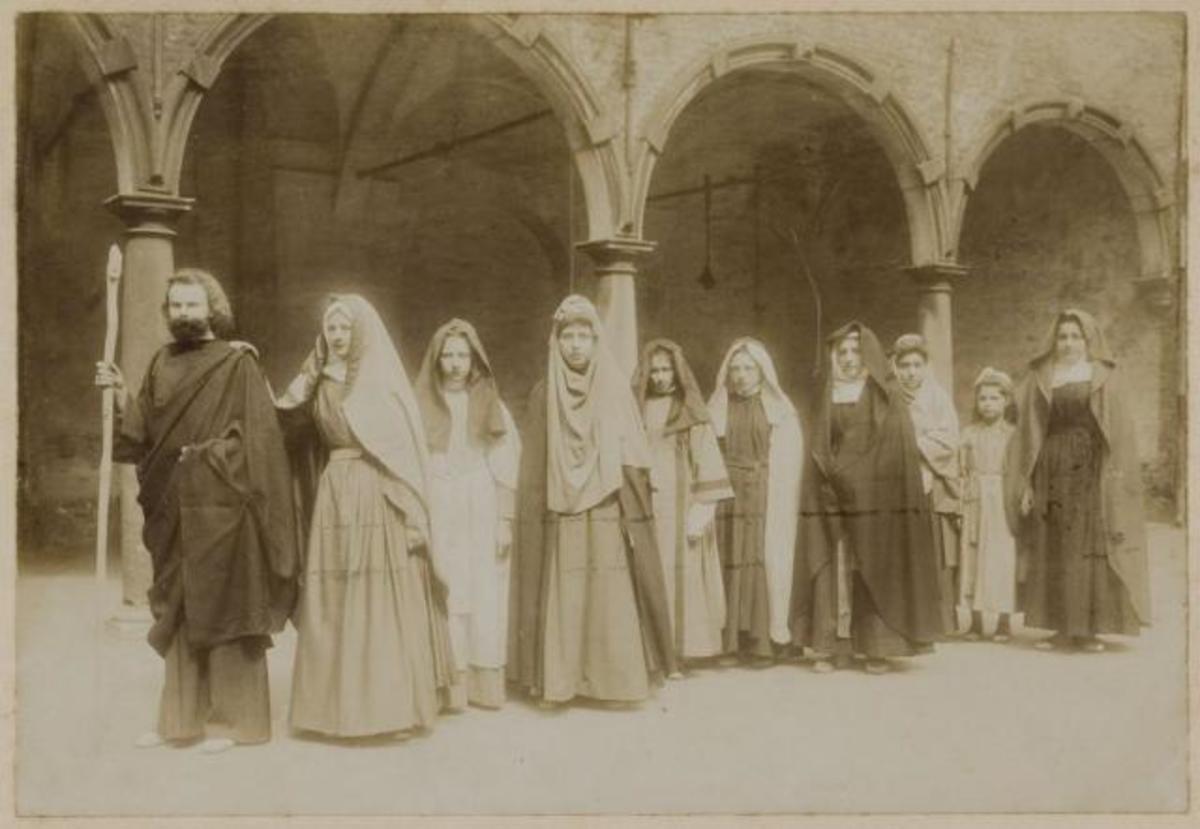
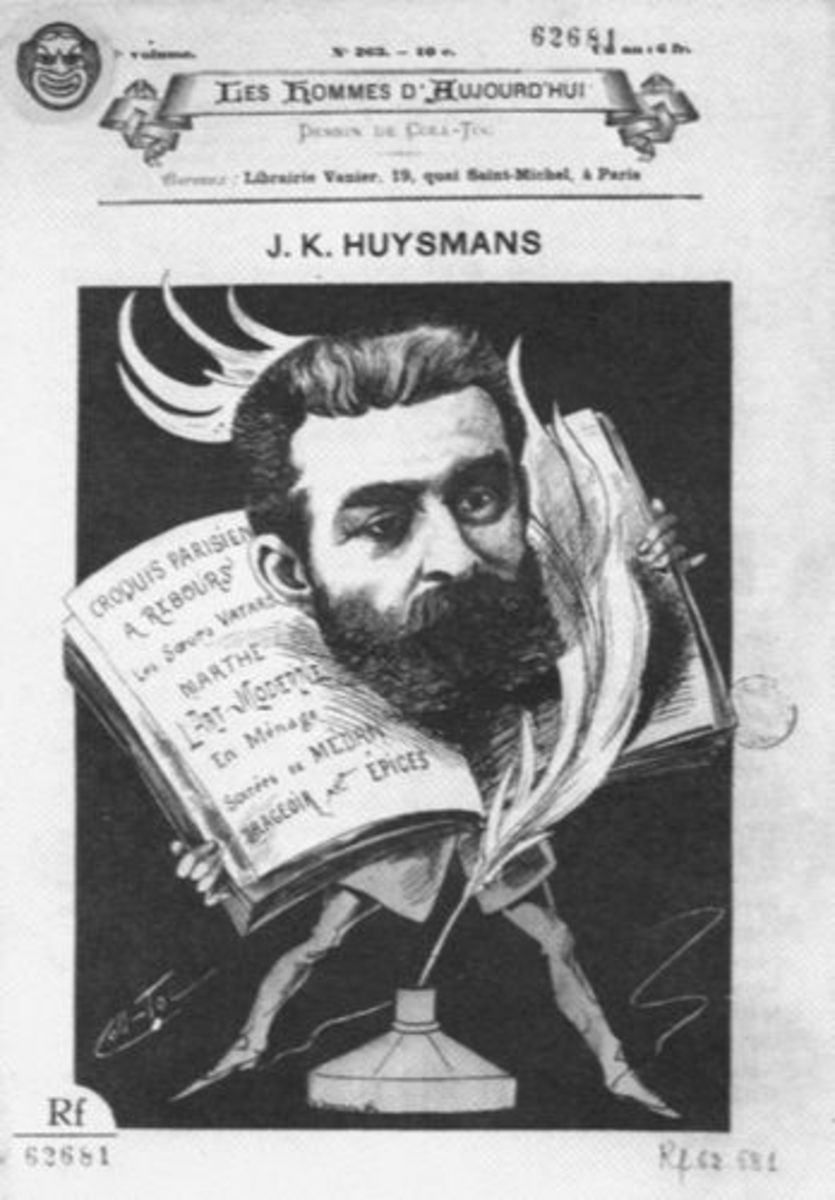
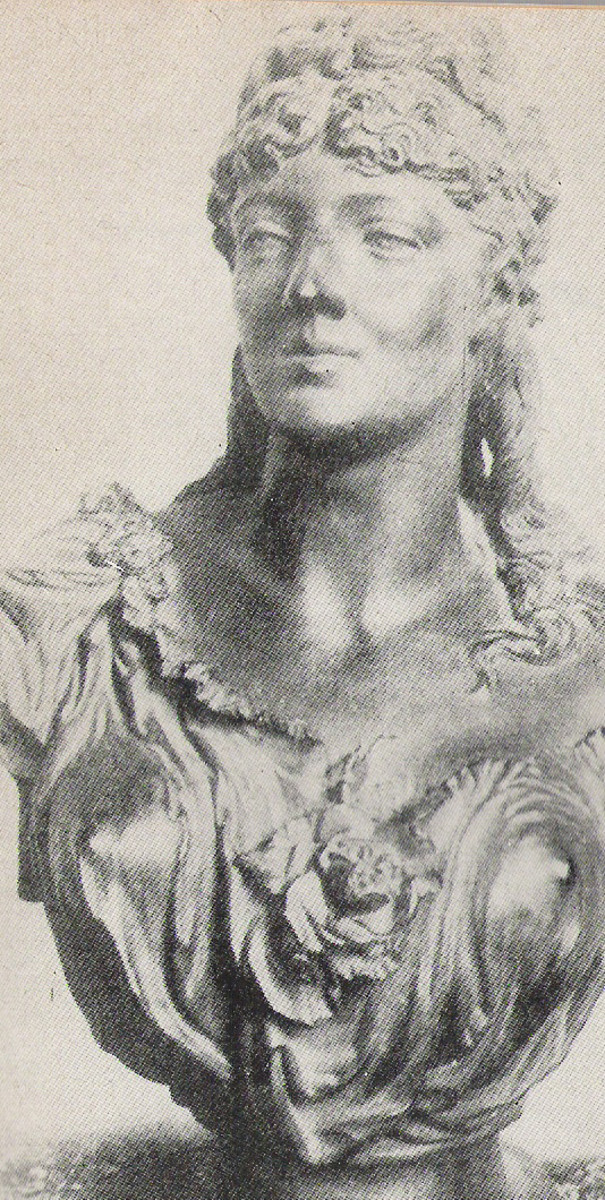
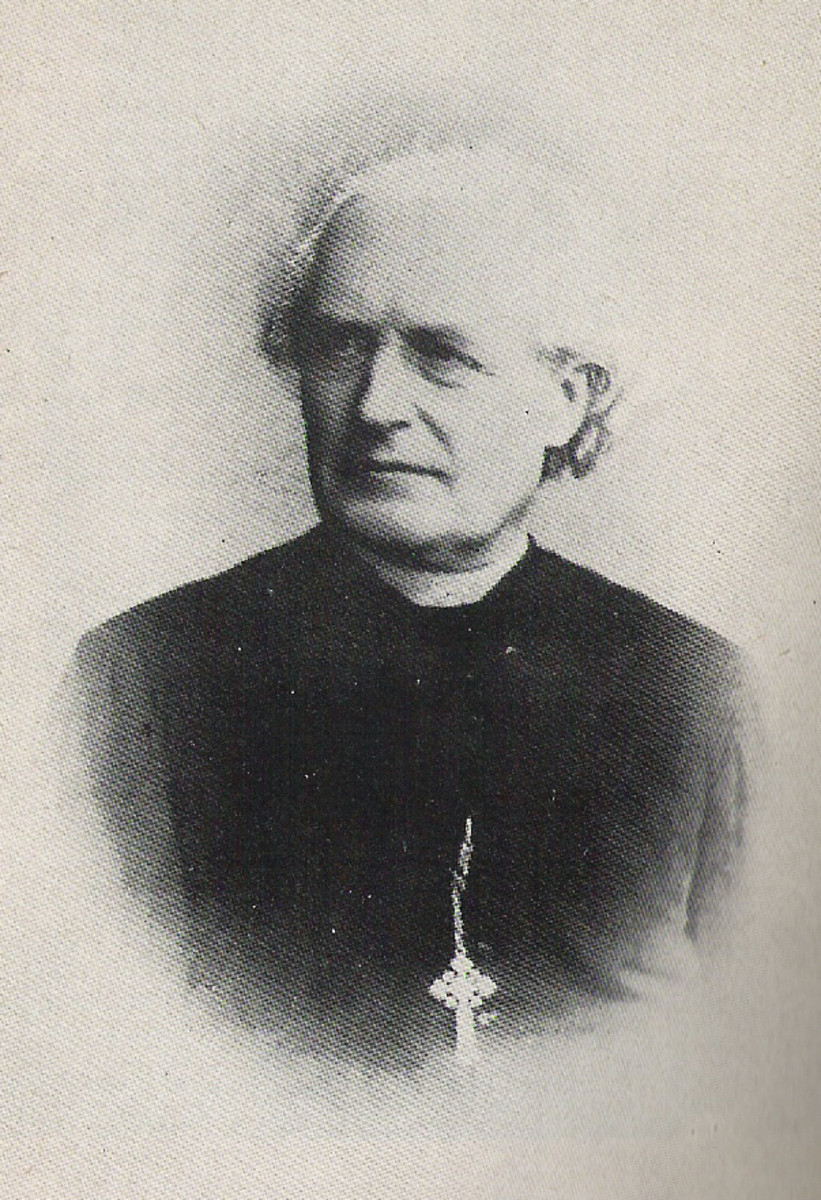






Louis Van Haecke
The Story Continues Here:
- The Medieval Procession of Penance at Furnes
A 1908 article in The New York Times says that he Belgian city of Furnes (Veurne) celebrates a Medieval Procession of Penance or Penitence, and this for more than 500 years... But why are the 12th century origins of the Procession not on the record? - Mysteries of the Mystic Lamb
The famous Ghent Altarpiece or the Adoration of the Mystic Lamb, completed in 1432 by Flemish Primitive Jan Van Eyck, is surrounded by many mysteries concerning the Holy Blood & the Holy Grail... - Where are the Just Judges?
Located in the part of Belgium that is known as Flanders, the Cathedral of Ghent - St. Bavo's - is something like Loch Ness, or the castle where the legendary Holy Grail or the Treasure of the Templars was... - Read more about the Church of the Holy Sepulchre
According to the Bible, Christ was taken outside Jerusalem to a hill known as Golgotha, or Mt. Calvary as it is referred to now days, and put to death by crucification He was then buried in a nearby burial... - Read more about the Secrets of the Knights Templar
In 1118, King Baldwin II receives an offer of assistance from a Crusader monk, Hugues de Payens, who wants to protect pilgrims traveling to the Holy Places (Holy Land)... - Read more from Philip Coppens: The Servants of the Grail
Ever wondered about the true facts behind Dan Brown's Da Vinci Code? The Grail, for instance... Was it really the Holy Blood, or even the holy bloodline of Jesus Christ? Investigative journalist Philip...
 groeninge 2, brugge, belgium -
groeninge 2, brugge, belgium -
Groeninge 2, 8000 Brugge, België
[get directions]
Here's a fantastic bed & breakfast in the heart of Bruges-la-Morte!
The Procession of the Holy Blood in Bruges
More by this Author
- 94
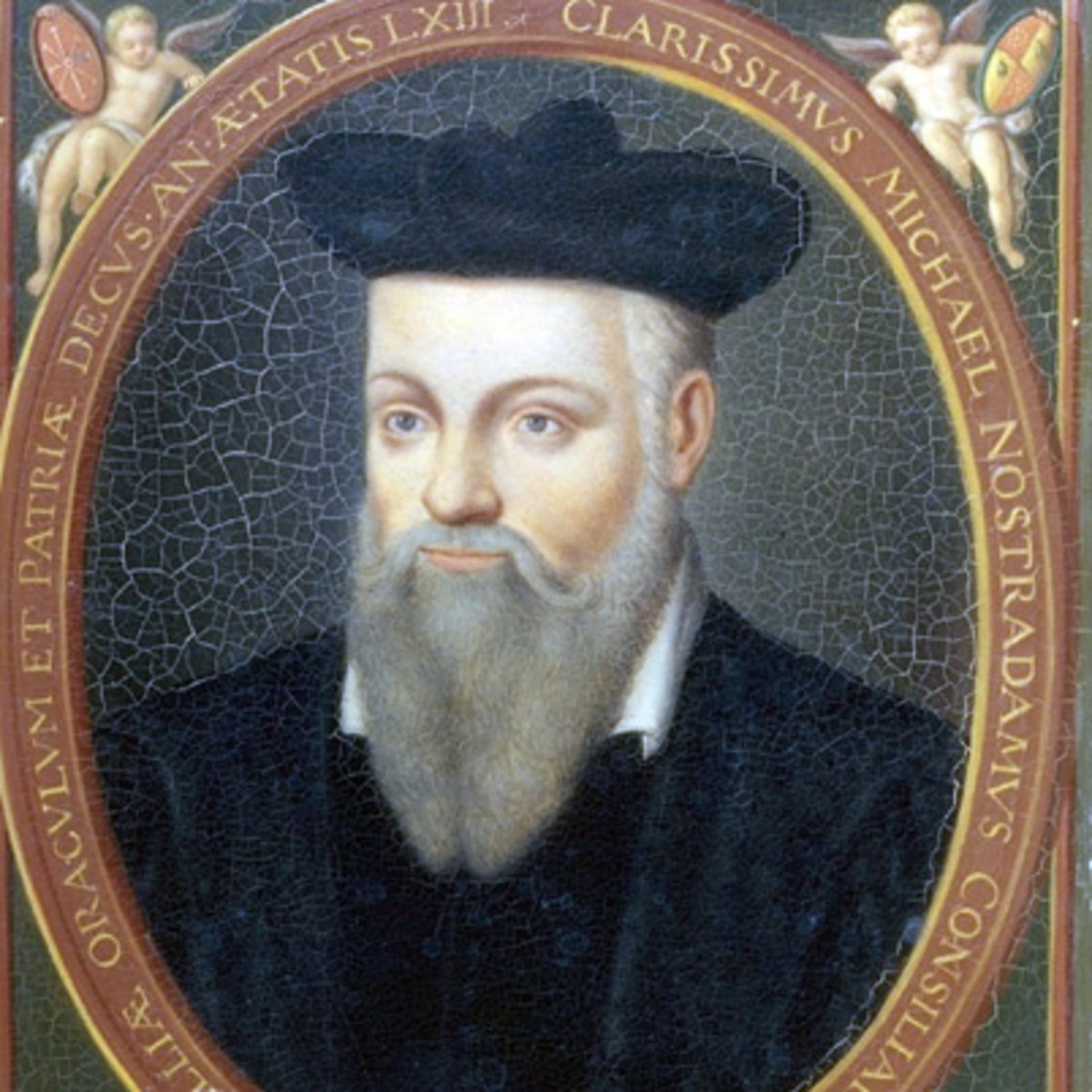 What faith should we place in predictions of Nostradamus concerning a black president and the end of the world in 2012? The answer is: none! But nevertheless, there are circulating on the internet some really idiotic...
What faith should we place in predictions of Nostradamus concerning a black president and the end of the world in 2012? The answer is: none! But nevertheless, there are circulating on the internet some really idiotic... - 4
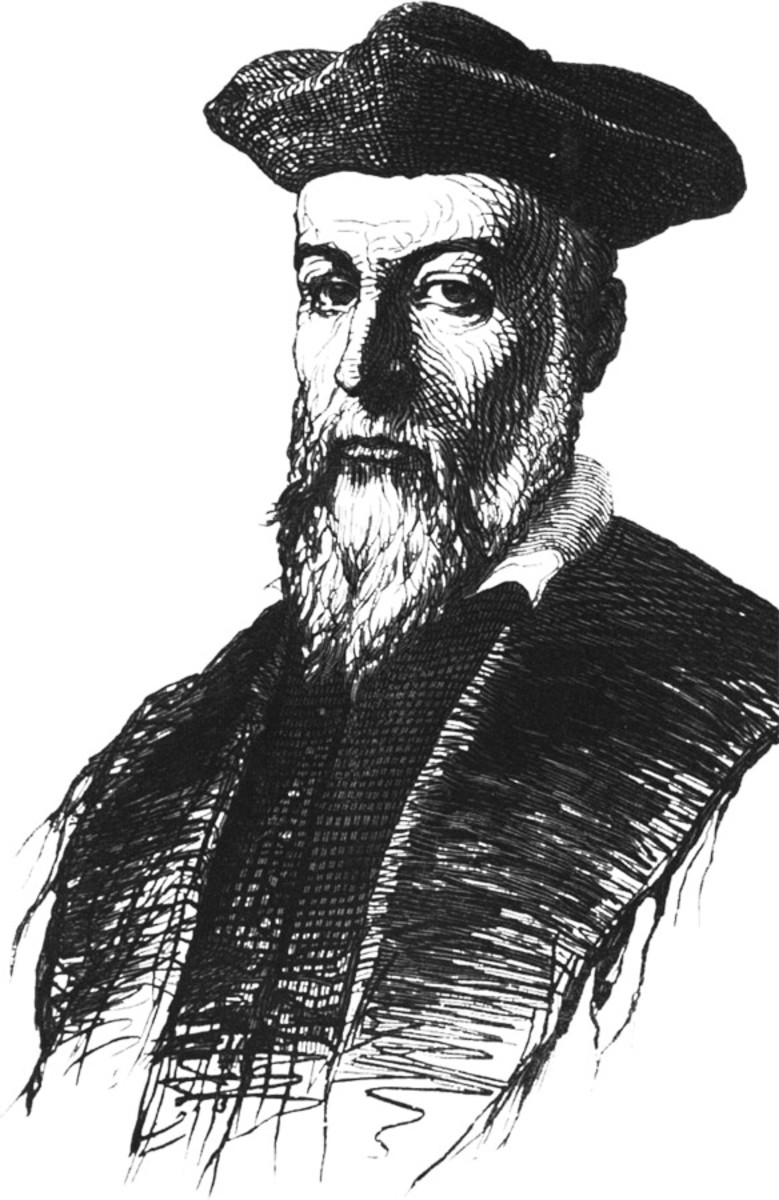 In 1840 the French magazine L'Oracle published a story told by the baron of Manonville in his diary. During the Revolution, he was in the abbey of Orval and listened to a Prophecy that seemed to predict the Restoration...
In 1840 the French magazine L'Oracle published a story told by the baron of Manonville in his diary. During the Revolution, he was in the abbey of Orval and listened to a Prophecy that seemed to predict the Restoration... - 7
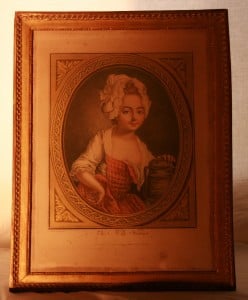 Now, you have to start something like a true treasure hunt, surfing that wonderful worldwide web. Who are these guys like Louis-Marin Bonnet, Francis Vivares, Gabriel Huquier? And what are they worth, these antique...
Now, you have to start something like a true treasure hunt, surfing that wonderful worldwide web. Who are these guys like Louis-Marin Bonnet, Francis Vivares, Gabriel Huquier? And what are they worth, these antique...
Comments 7 comments
morgan 7 years ago
I visited Bruges a couple of times and never tire walking around sightseeing.
Basilica of the Holy Blood is very Holy Church. Well worth a visit.

Ande Moore 7 years ago from Austin, Texas
Great article. It's starting to look like around 1107 as the "founding" of the Templars. With assoc. w/ St. Bernard and a few others, some nice work been done up in Scotland have uncovered some interesting things. Something worth keeping an eye out for. Keep up the great work.
kirwing 7 years ago
Another awesome article with so much artistry displayed in your written word. As I stated this work is an incredible journey through history regarding Christ, Mary Magdelan, Knights of Templar....so much interesting topics for discussion and thought. You're no Lost Dutchman to me!

adorababy 6 years ago from Syracuse, NY
My friend who had her European trip last Christmas was so amazed at the sights and sounds of this city. The Holy Blood is a premiere tourist attraction and one cannot go there without stopping by this church.

earthbound1974 5 years ago from Bicol, Philippines
Thanks for this well-researched hub. I'm always fascinated about Knights Templar and the life of Mary Magdalene.
Anna Dixon 4 years ago
Mary Magdalene - Princess of the House of Orange.
A new book, by Ralph Ellis
Did Mary Magdalene travel to Provence, in France? Ralph Ellis follows the trail of mythology and reveals circumstantial evidence to suggest that she did, and that her presence there has left its mark on the region. Ralph also suggests that the legacy of Mary Magdalene was bequeathed to the town of Orange, the town that was central to the Royal Dutch House of Orange, and thus central to the entire Reformation and Enlightenment movement of the 17th century.
The book then goes on to explore the Orange Enlightenment and the Age of Reason, the twin religious reforms that created the modern rational and technical world that we live in today. But this era of rationality and reason is now threatened by forces of darkness that seek to extinguish the gains of the Enlightenment. Will the twin fundamentalist forces of Environmentalism and Islam take us back to the Dark Ages, and into a new era of fear, ignorance and oppression? In this section, Ralph Ellis tackles some ancient and modern taboos, with his characteristic hard-hitting style; each and every politically-correct stone is overturned, in this robust defence of the intellectual freedoms of the Enlightenment.
Only available on iPad or Kindle.
Please do not hesitate to contact me for more information
Regards,
Anna Dixon
gepeTooRs 9 months ago
Somebody essentially assist to make significantly articles I would state. That is the very first time I frequented your website page and thus far? I surprised with the analysis you made to create this particular put up extraordinary. Magnificent job!

Thursday, December 29, 2016
A Word From The Dead 'Rehab Romance' The Original Lolita Anti-Christ Posthumously By D N R
A Word From The Dead 'Rehab Romance' The Original Lolita Anti-Christ Posthumously By D N R
In the summer of 2006; they were
offering me a loan. To use however I wanted. You should be able to see trouble
coming like a fucking freight train right about ….now!
I remember
making the phone call to find out about accepting the loan. I got the details.
I hesitated for a micro second. Then I said, “I’ll be there tomorrow!”
I spent the
summer and fall of 2006 drinking and frequenting prostitutes like I never had
before, and stopped taking any medication or continuing with mental health
therapy.
And then I
lost my job, my Mom refused to let me see my kids at her house and it was time
to get help again. Thus, I ended up at the Crisis Center in Poughkeepsie New York
And there
on December 1st, 2006, I would meet Ann.
So I went
into a Crisis Center here in Poughkeepsie, New York. I have a special affinity,
a place in my heart for the program, and I owe them a debt of gratitude. I
still go there for occasional meetings.
It is not a
rehab, a PLACE to RE-HABILITATE; but a place where someone can go to dry out… a
place where you can receive counseling and assistance, and set a plan to move
on to a higher level of care…and hopefully, Rehabilitation…ha!
I had been at
this facility before in 2003; it was the start of my journey to actual Rehab in
January of 2004, but here I was, I needed to be there again in 2006. I was
stuck on stupid, I was obsessed with drinking, and prostitutes, and I was
compelled to do it all over again, re-live the madness, every chance I could,
until the money ran out...and then… all I wanted was to drink...
This time
around was a little different however. In January 2004 I had not been taking
any medicine for my Manic Depression. This time around I knew what to do. I
started taking my medication, they increased the dosage of one medicine and I
started supplementing with another, and I began to feel great mentally and
emotionally very quickly. It was almost Christmas 2006, and I didn’t want to
disappoint my children, I didn’t want to be in “Rehab” again, like I was the
Christmas of 2003, I HAD TO get better, and quickly…
I didn’t
have any insurance, so I couldn’t go to Rehab because I couldn’t pay for it, but
the Crisis Center boss said I could stay until the fog had lifted and I could
go back out into the world. That was all I needed at the time. Or so I thought…HA!
The fog, Dear Sweet Ann, only intensified!
So,
realistically speaking, here’s where I was at.
There is
this thing called Step One in A.A. It says, “We admitted we were powerless over
alcohol, and our lives had become unmanageable.” I always have said “I was powerless
over life and my use of alcohol was unmanageable”. That’s me, always fooling
with things; I have to put my own twist on it.
But to me
it’s true; alcohol was just another thing I wanted to control in my world. The
point then becomes that when you realize alcohol IS running your life, that’s
when you have to admit you are powerless over it. That point I did not get
until sometime in 2009.
I have
always had a reservation; that if I could manage my life I could manage my
alcohol use. No matter what happened or anything else, ANYTHING else; no matter
the price or the consequences, I could do it and have fun. What I failed to
realize was that the alcohol use was the general façade I hid behind, the all
purpose painkiller I could count on, as I struggled with my major issue of self
esteem. This will come up again later in the story, the phrase I have in my
head, “When in doubt, check the fuck out”. No matter what else happened,
alcohol would make it okay.
Then there
is Step 12, “Having had a spiritual awakening, we continued to practice these
principles in all our affairs…”
There was
no spiritual awakening; that was not me, I would never feel or be any
different. To sum it up, it is like the Kate Bush song “The Sensual World”;
that was me then; it is me now, and I know it. Do you know the song? Ever since
I first heard it I identified with it strongly, it summed up my weakness, which
I would not realize for a few years into our story, my endless search for
acceptance and love…and then again, this story is a look and commentary on the
situations in which I thought I’d finally found it…
So I had
tried it, I had tested the waters once again between 2004 and 2006, tried to be
me and enjoy the world I had desired, AGAIN! But no..!.. It’s true, there I was
back in the Crisis Center, I was hurting, I needed to pull my life together,
and I thought drinking was done in my life. The truth is that my reservation
was buried deep in my mind and would wield its substantial influence…
I now
believe in one thing about this program of recovery, that I can’t stress
enough. You will not succeed until you have a spiritual awakening. That’s all.
And for future reference, is a spiritual awakening a moral question, an ethical
question, a religious belief? I love discussing those kinds of things, I’ll
mention it again later in this story, it is relevant…Or is an awakening just
sometimes practical, as in “I’d prefer not to go to jail…so…I have had AN
awakening! (Please read as “Please, stop persecuting me, I’m good…thanks,
GOODBYE..!”) That’s a good one…
So, the
truth is, at the time, I didn’t want to drink anymore, I thought I wouldn’t,
but I didn’t fully understand how profound the need for real actual mental and
emotional change there was needed in all aspects of my life. And the truth is,
I didn’t understand me, not yet, and the reservation I held was all tied up in
it.
So, on
December 1st 2006, I really did want to get my life on track. I
didn’t want to drink. I thought I understood it finally. But I didn’t.
As such, as
usual, I was ripe, ready, and all set, for distraction and diversion.
And I found
it.
I remember
the first time I saw Ann. I remember thinking as I looked at her the first time
in the crisis center, “There’s a new girl here! Wow….!”
I was
floored baby, I was all in from the get go.
Ann is a
beautiful tall thin blonde with striking green eyes, she reminded me of
Elizabeth Montgomery from the old TV show Bewitched, who I always had a crush
on, ever since I was a little kid, so I definitely took notice when I saw her
that first day.
But guess
what? I didn’t pay attention to her. I don’t think I even said hi at first,
even in passing. I was there for a reason, and it was not to get laid! I was
there to concentrate on my recovery! I was thinking about recovery, I was
working it in my mind. I was not concerned about starting a new relationship...if
only because I already had a dysfunctional one! We’ll get to that…
So I wish I
could say it was all immediate attraction, that I cornered her in the laundry
room as she groped for my belt buckle as I French-kissed her, but it’s nothing
as steamy and salacious as that. Nope. I probably said hello eventually and
talked a little at meal or group time.
She told me
later she had noticed me immediately as well, go figure!
The truth
is she began to grow on me. I couldn’t help but look at her, found myself
turning to look at her, looking at her out of the corner of my eye, sneaking a
peek as much and as many times as possible. Hey, recovery is all well and good,
but seriously, I’m a guy, you know?!
So anyway, during
that first week she was there, there was one group time meeting, and the
counselor lady says, “Today we’re going to do something different. Ann is going
to teach us how to make airplanes out of paper, like origami, so you guys, pay
attention.” I’m thinking, NO PROBLEM! Ha-ha.
Subscribe to:
Comments (Atom)





